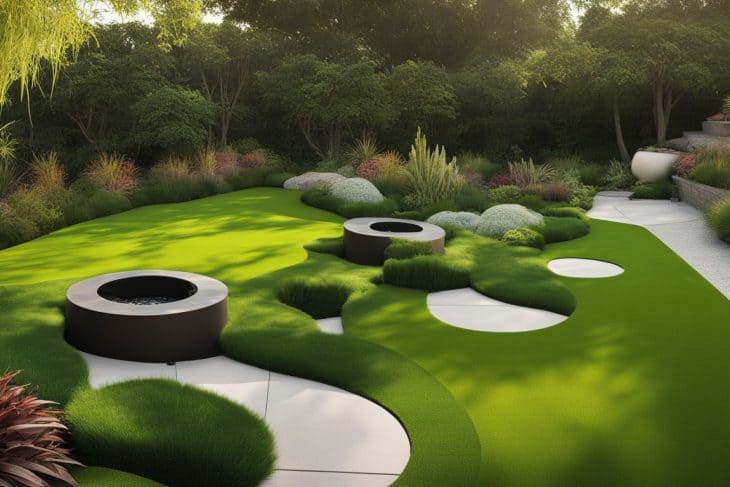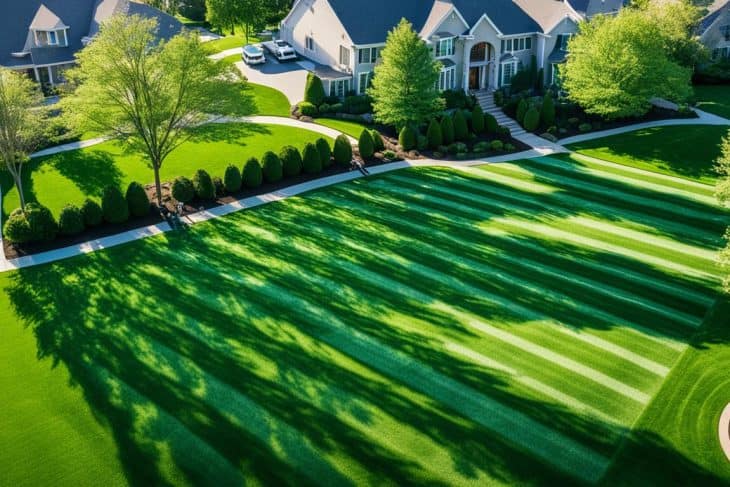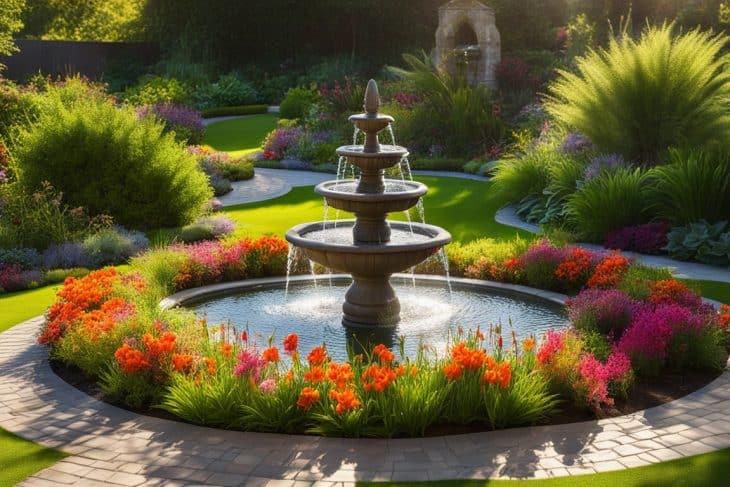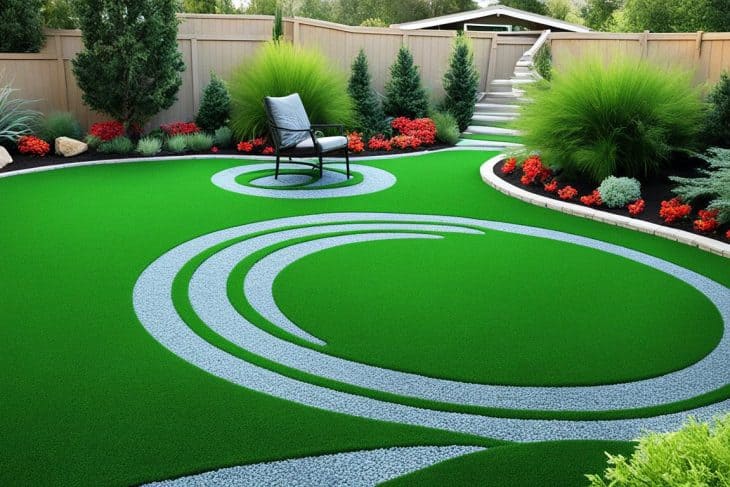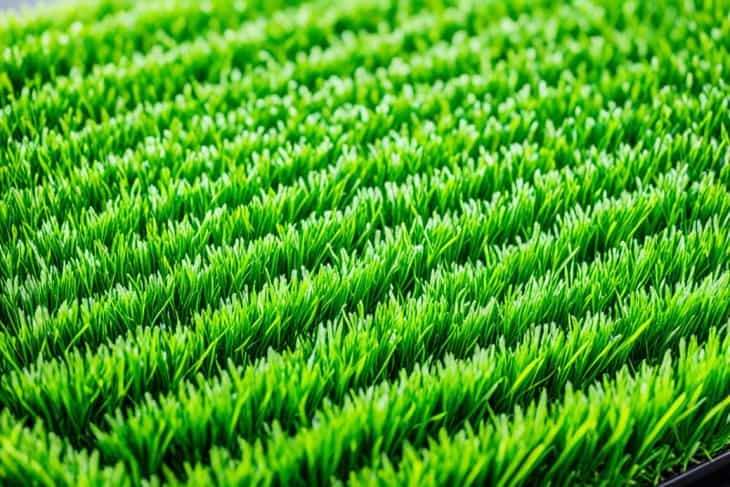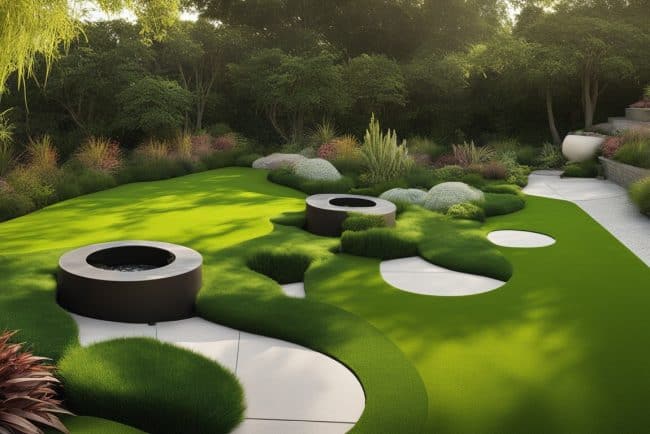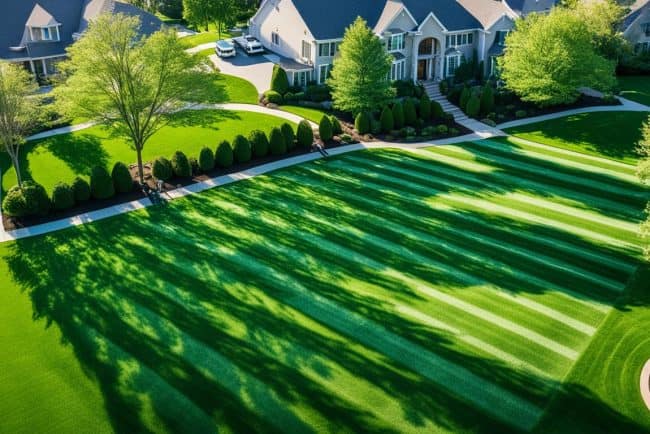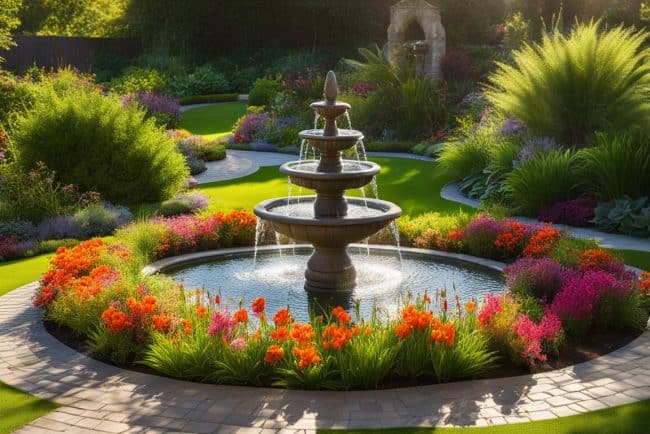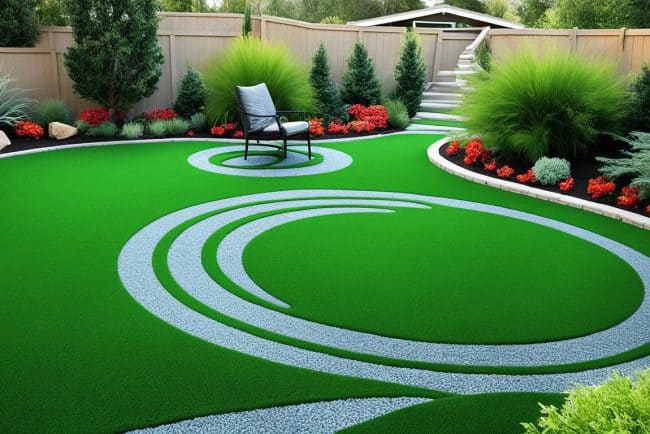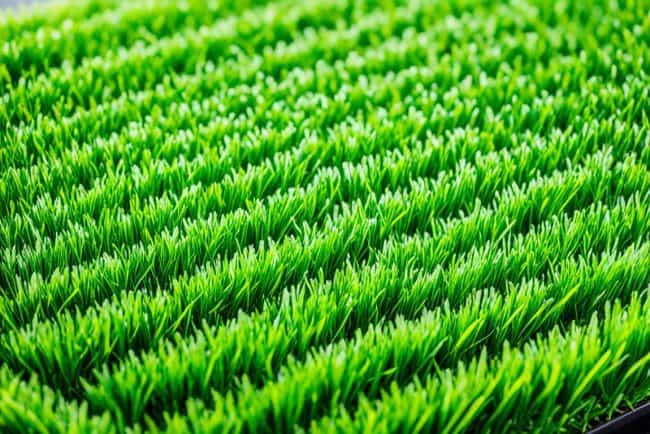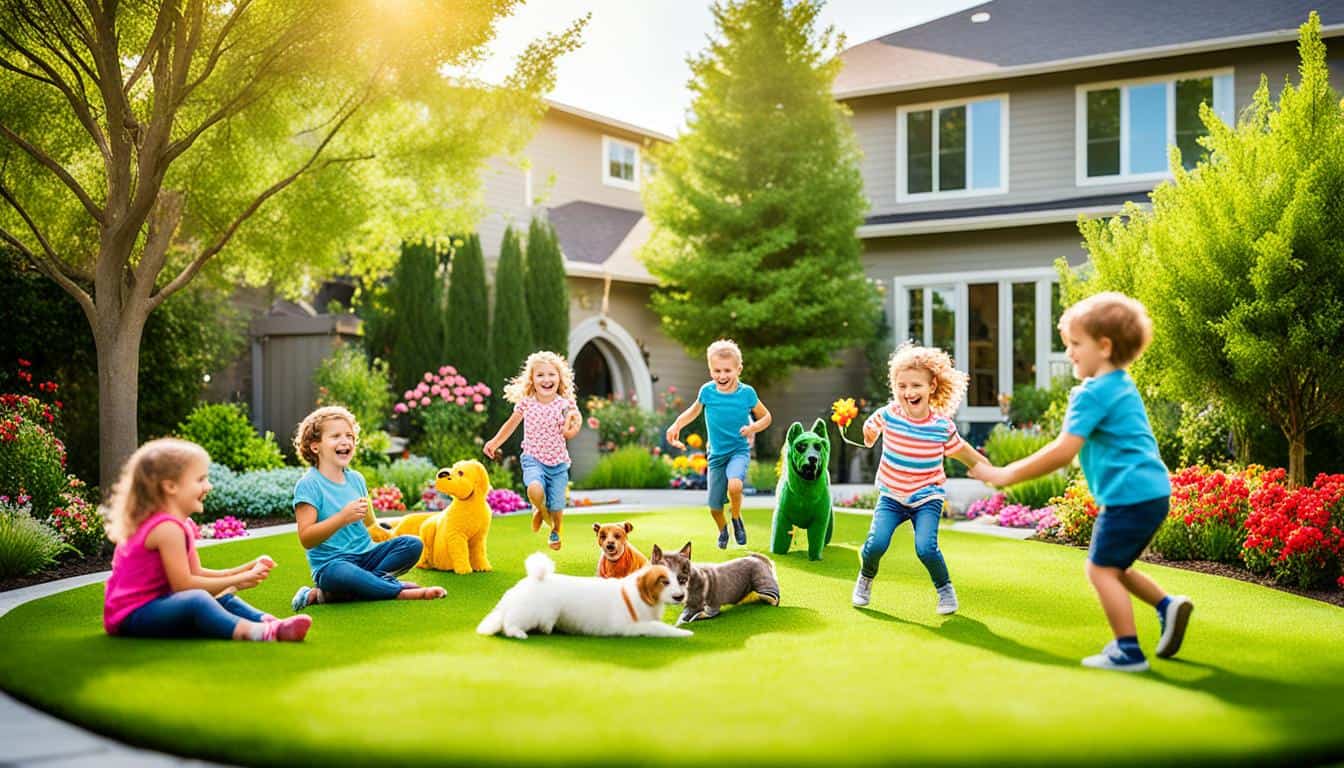
Artificial turf has come a long way in the last 50 years, thanks to companies like SYNLawn Indiana. These advances make outdoor areas safer for kids and pets. Many families are now choosing artificial turf for their yards.
Synthetic grass avoids the use of harmful chemicals and allergens, unlike real grass. This creates a healthier place for children and pets to play. SYNLawn Indiana’s products are top-notch with plant-based materials and antimicrobial features. They also last a long time, making your lawn both beautiful and secure.
Choosing artificial turf means creating a safer spot that lowers injury risks. It gives families peace of mind. Let’s see how artificial turf can make our outdoor areas better and safer for everyone.
Key Takeaways
- Artificial turf is known for offering a safe area for kids and pets.
- SYNLawn Indiana products have unique, plant-based backings.
- There are many choices for a kid-friendly lawn.
- Artificial grass’ toughness means it lasts a long time.
- Its safe and green materials make outdoors healthier.
The Benefits of Artificial Turf for Creating a Safe Lawn
Choosing synthetic grass for your yard comes with many benefits. It’s practical and creates a safe space for kids and pets to enjoy. Key advantages include safety features, cushioning layers, and being allergy-friendly. These make artificial turf an attractive choice for homeowners today.
Enhanced Safety Features for Play Areas
Artificial grass makes play areas safer. It gets rid of hazards like sharp objects and muddy spots. This lets kids play without getting hurt or dirty. Pets also benefit from a clean, safe space outside. They won’t bring mud back into the house after playing.
Shock-Absorbing Layers for Fall Protection
Synthetic turf can have layers that absorb shock to protect kids from falls. This is especially important in areas where they play and might tumble. It lowers the chance of getting hurt. The turf is also made to stop bacteria from growing. This keeps the play area healthier for kids and pets alike.
Hypoallergenic and Non-Toxic Options
Artificial grass is good for those with allergies. It doesn’t need chemicals like fertilizers or pesticides, making it safe for everyone. It helps lower exposure to allergens such as pollen and mold. This means children and pets can play outside without worry.

Choosing the Right Synthetic Grass for Kids and Pets
Choosing synthetic grass is key for a kid and pet-friendly yard. Look for options safe for pets, sturdy, and eco-friendly. These factors are crucial when picking out turf.
Pet-Friendly Turf Options
Finding turf that’s safe for pets is important. Smart Pet Plus turf has features to keep things clean and odor-free. It’s strong enough for pet play and outdoor fun. You won’t have to worry about it getting ruined quickly.
Durability and Maintenance Considerations
Durability matters a lot for synthetic grass. You’ll want turf that’s tough, with a weight of 75 to 80 ounces per square yard. It stands up to lots of use. Synthetic turf is low-maintenance, which means more family time. A quick brush and hose down keep it nice.
Environmental Impact of Artificial Turf
It’s also smart to think about the environment. While it doesn’t need water, fertilizer, or bug spray, its make and life matter. Choose sustainable turf for a lovely yard and to take care of nature.

Creating a Child-Friendly Yard with Artificial Grass
Turning my yard into a place where kids can play and explore safely is my goal. Artificial grass helps make this outdoor area welcoming. It protects them during play, making it ideal for kids to have fun without getting hurt.
Designing Spaces for Exploration and Play
I use artificial grass to make special areas that encourage kids to play creatively. These can be sensory spots or themed areas, all safe for kids to explore. Artificial grass is easy to look after, which means more fun times with my kids outdoors.
Incorporating Play Equipment Safely
Adding play structures safely is my main focus. I follow set-up instructions closely and use soft surfaces around play areas to prevent injuries. It’s important to keep the play zones clear and the equipment secure. This way, kids can use their play areas without any danger.
Ensuring a Safe Lawn: Proper Installation Guidelines
Creating a safe lawn means paying attention to how it is installed. It’s vital to prepare your site well and keep it up. Doing so ensures that artificial turf works best and stays safe for everyone.
Good installation helps with water drainage and keeps the lawn healthy. This brings peace of mind, especially for families.
Site Preparation and Maintenance
First, clear away debris, rocks, or old grass. Start with a clean area for your artificial lawn. A well-prepared base is crucial for good water drainage. Keeping up with this base helps avoid water pooling, which can cause bad smells, especially if you have pets.
It’s wise to check the soil underneath from time to time. Make sure it’s compact but still lets water through. This helps with drainage and keeps your lawn in top shape.
Choosing the Right Drainage System
A good drainage system is key for any artificial lawn. It prevents water from standing still after it rains or you water the lawn. Such systems keep mosquitoes away and protect the quality of the grass.
Choosing a system like Hydro 98 keeps your lawn looking and working great. It’s an investment that pays off by keeping your lawn beautiful and functional.

Maintenance Tips for Your Safe Lawn
To keep your artificial lawn looking great, combine simple cleaning with focused care. These methods keep the lawn lively and safe for kids and pets.
Simple Cleaning Techniques
Simple cleaning steps keep my artificial grass in top shape. I often hose down the lawn to remove leaves and dirt. Occasionally, I brush the grass to make it fluffy and nice to look at.
These steps are key for keeping my lawn clean and attractive. They help make my outdoor area look its best.
Long-Term Care and Upkeep
I regularly check my lawn to catch any issues early. This involves looking for wear and ensuring the infill is topped up. Keeping up with these tasks helps the turf stay functional and look good.
Consistent care prevents damage and saves money on repairs. It keeps the lawn safe and appealing for my family.
Cost-Effective Solutions: Artificial Turf vs. Natural Grass
Choosing between artificial turf and natural grass for my lawn is a big decision. Synthetic grass has a higher initial cost of $9 to $12 per square foot. However, the long-term savings are huge.
Maintaining a 1,000-square-foot artificial lawn costs about $15,000 over 20 years. For natural grass, it’s roughly $35,800. This shows that artificial turf is more cost-effective in the long run. It saves on lawn care time and expenses too.
Initial Investment and Long-Term Savings
The average American spends about 72 hours a year on lawn care. This includes mowing, watering, and using chemicals. With artificial turf, the time spent on maintenance drops significantly. You can save over $1,000 each year by going synthetic.
This makes the initial cost worth it. The savings over time truly add up.
Reduced Water Usage and Chemical Costs
In dry places like Texas, artificial turf can cut down on water use. A 1,000 square foot natural lawn needs around 620 gallons of water per watering. Synthetic grass needs less than 80 gallons.
Plus, there’s no need for fertilizers or pesticides. This saves money and is better for the environment. It’s a way to keep my family’s space safe and healthy.

